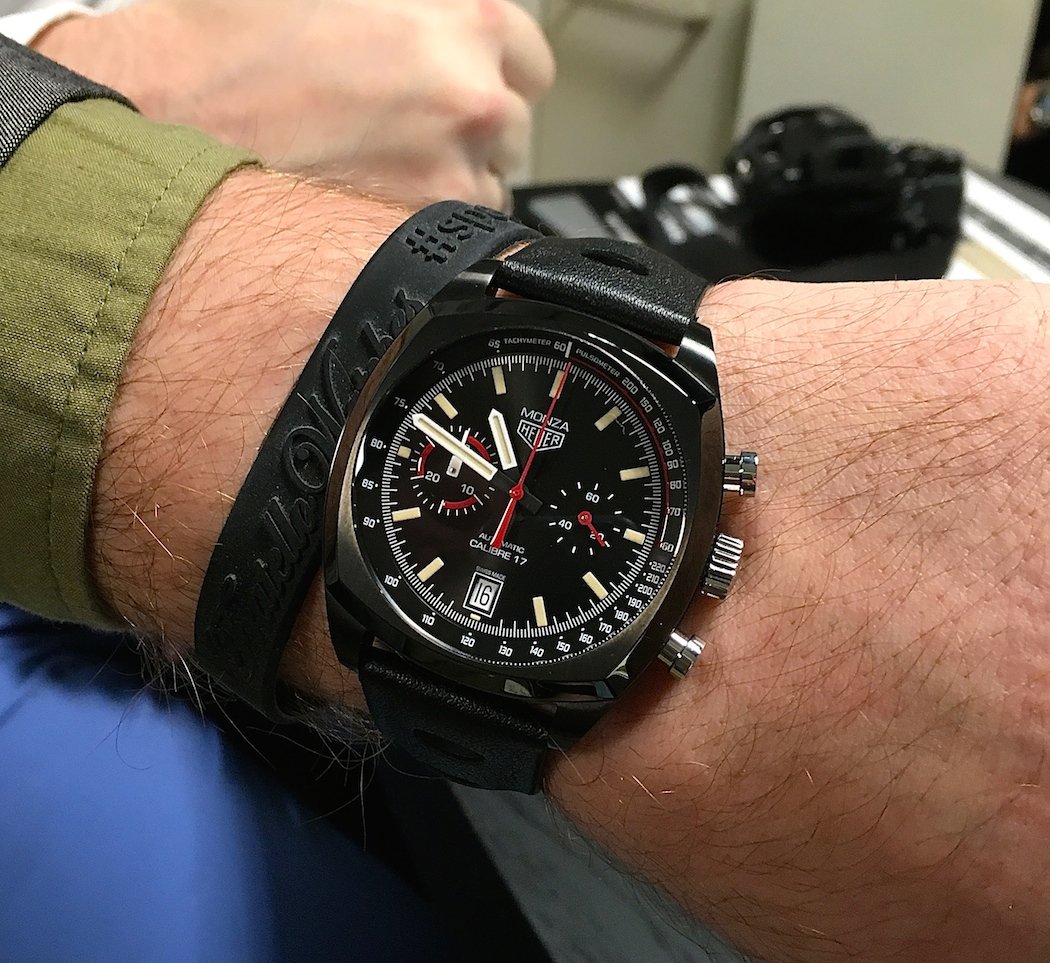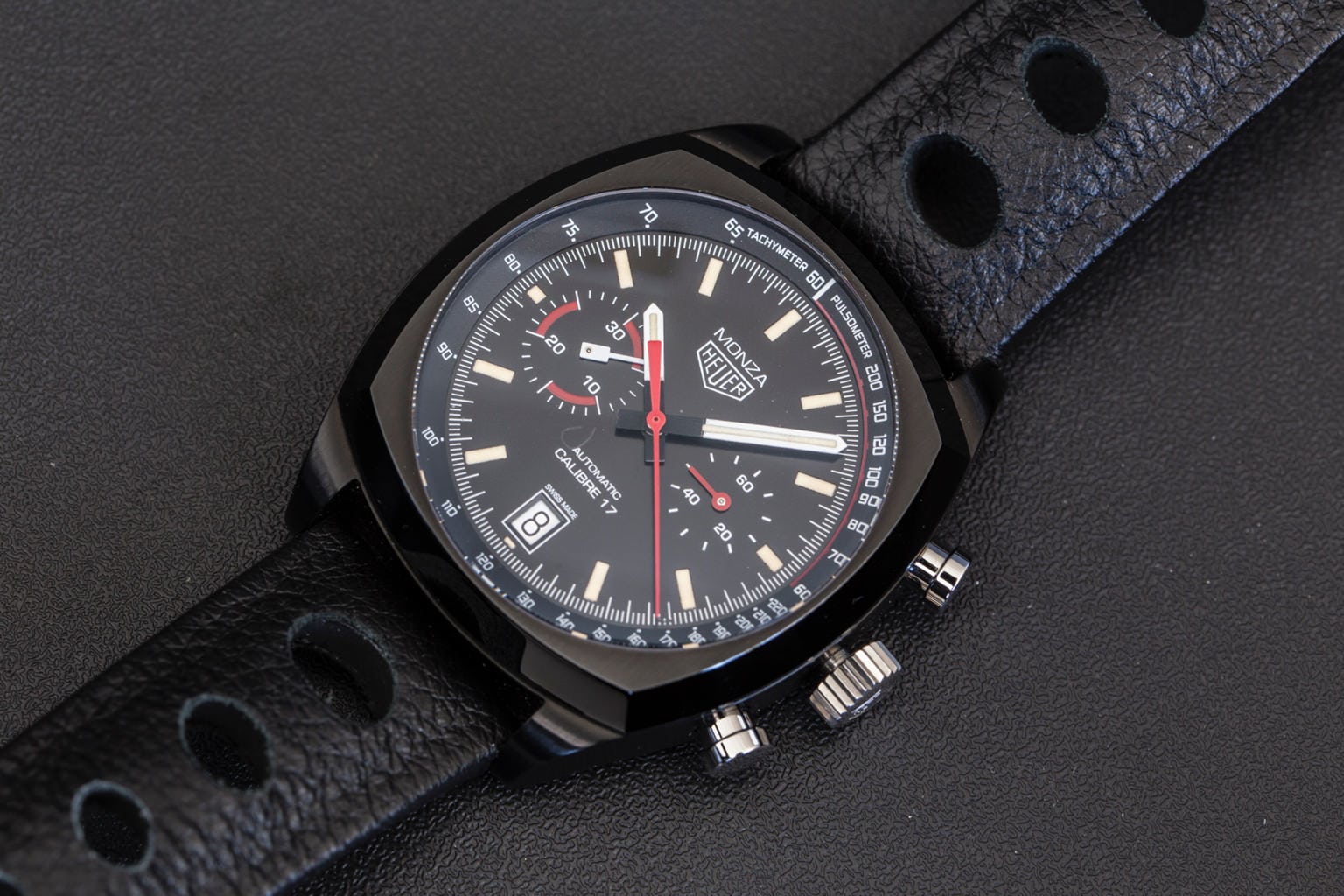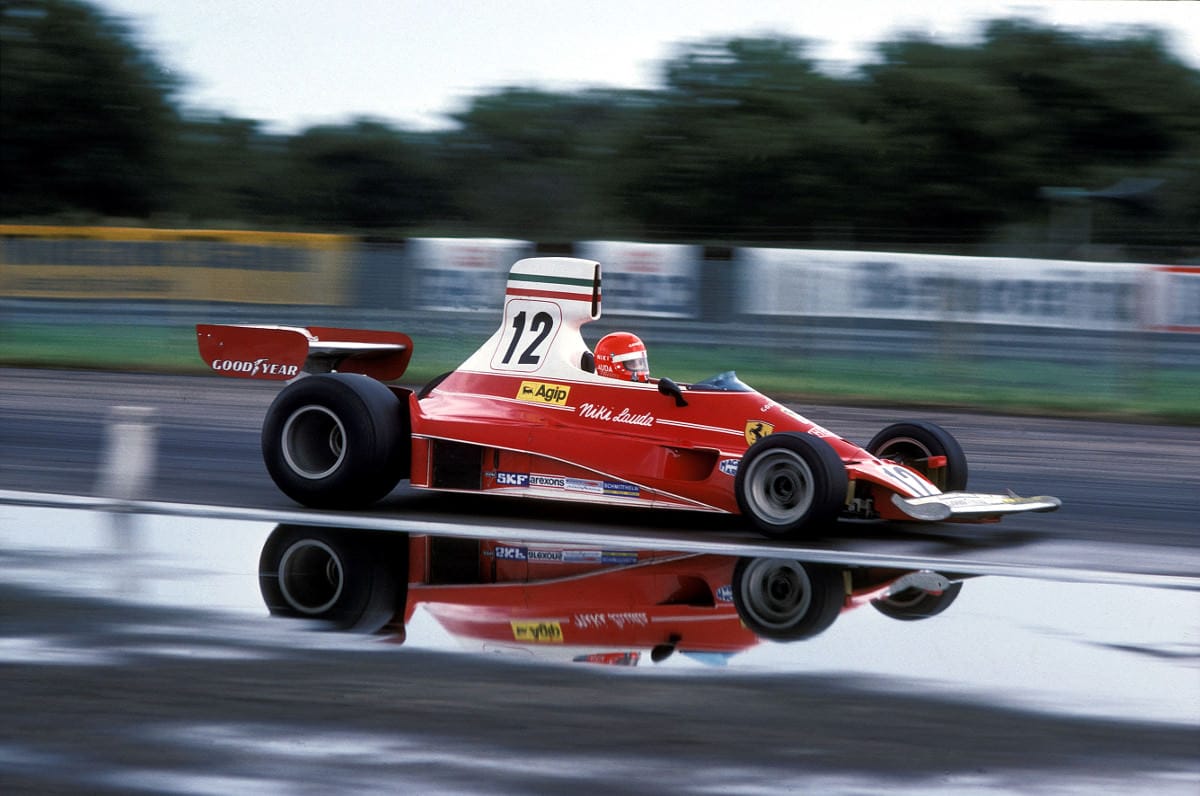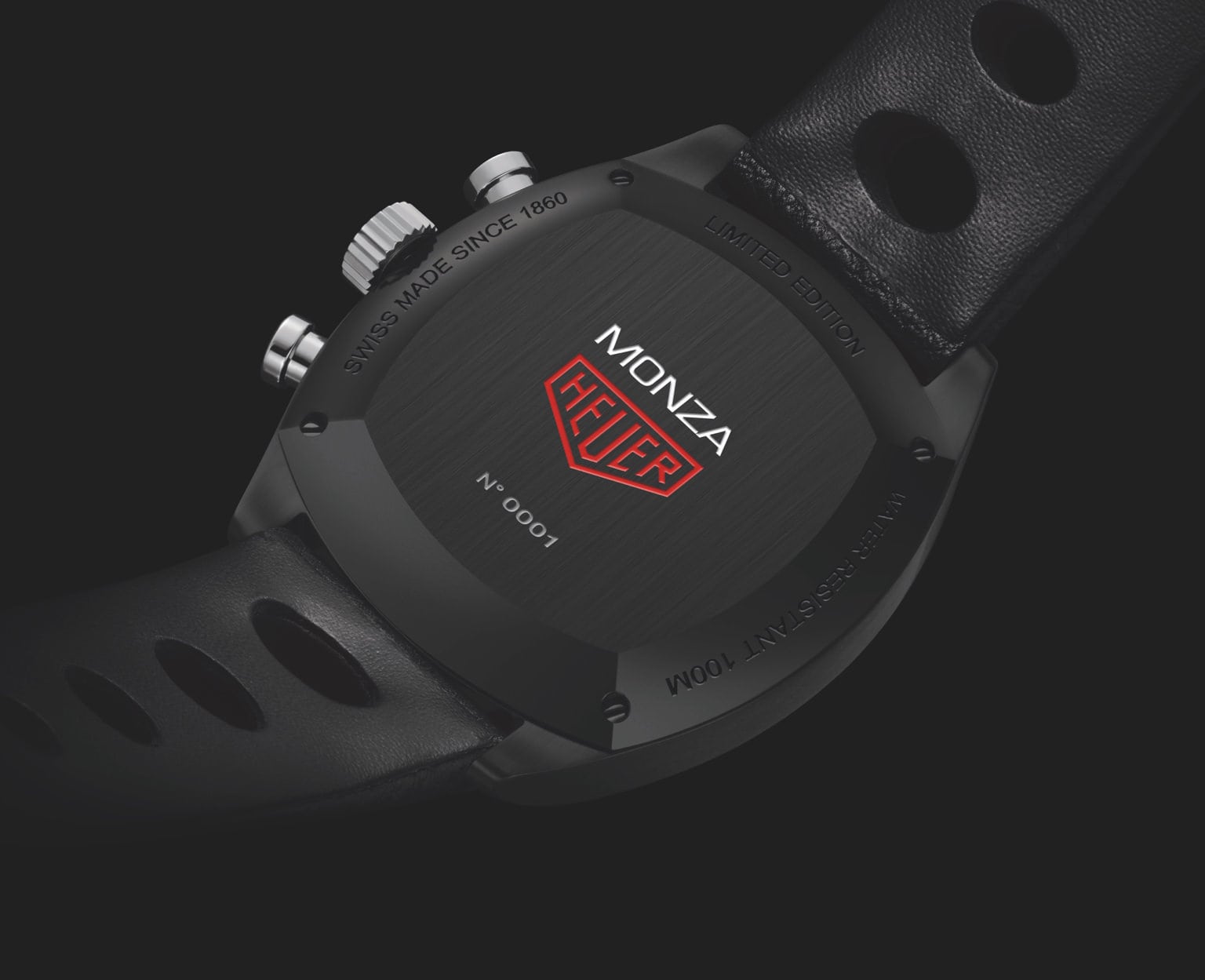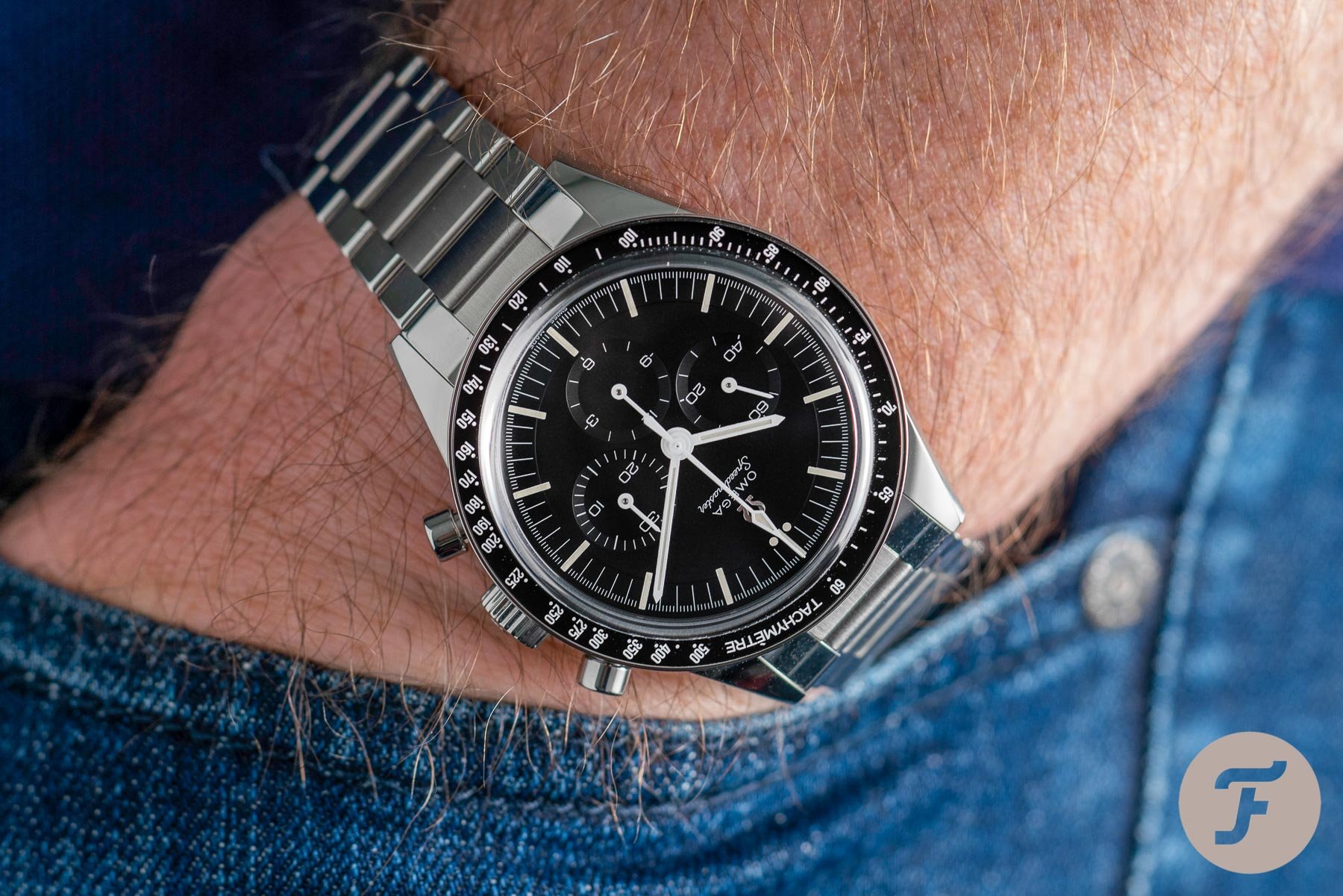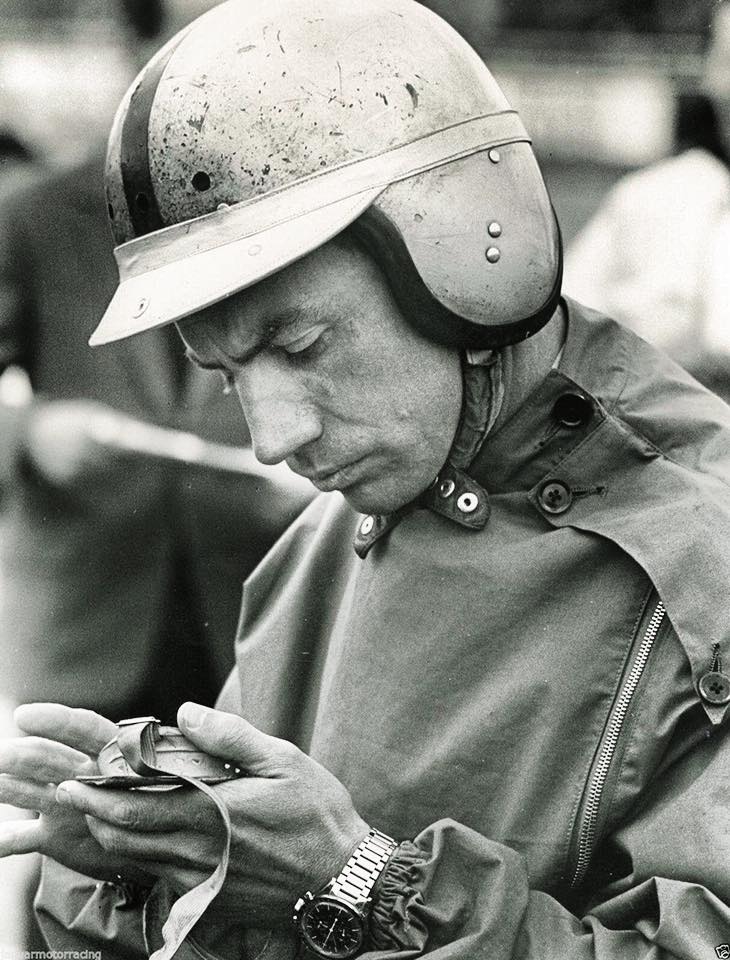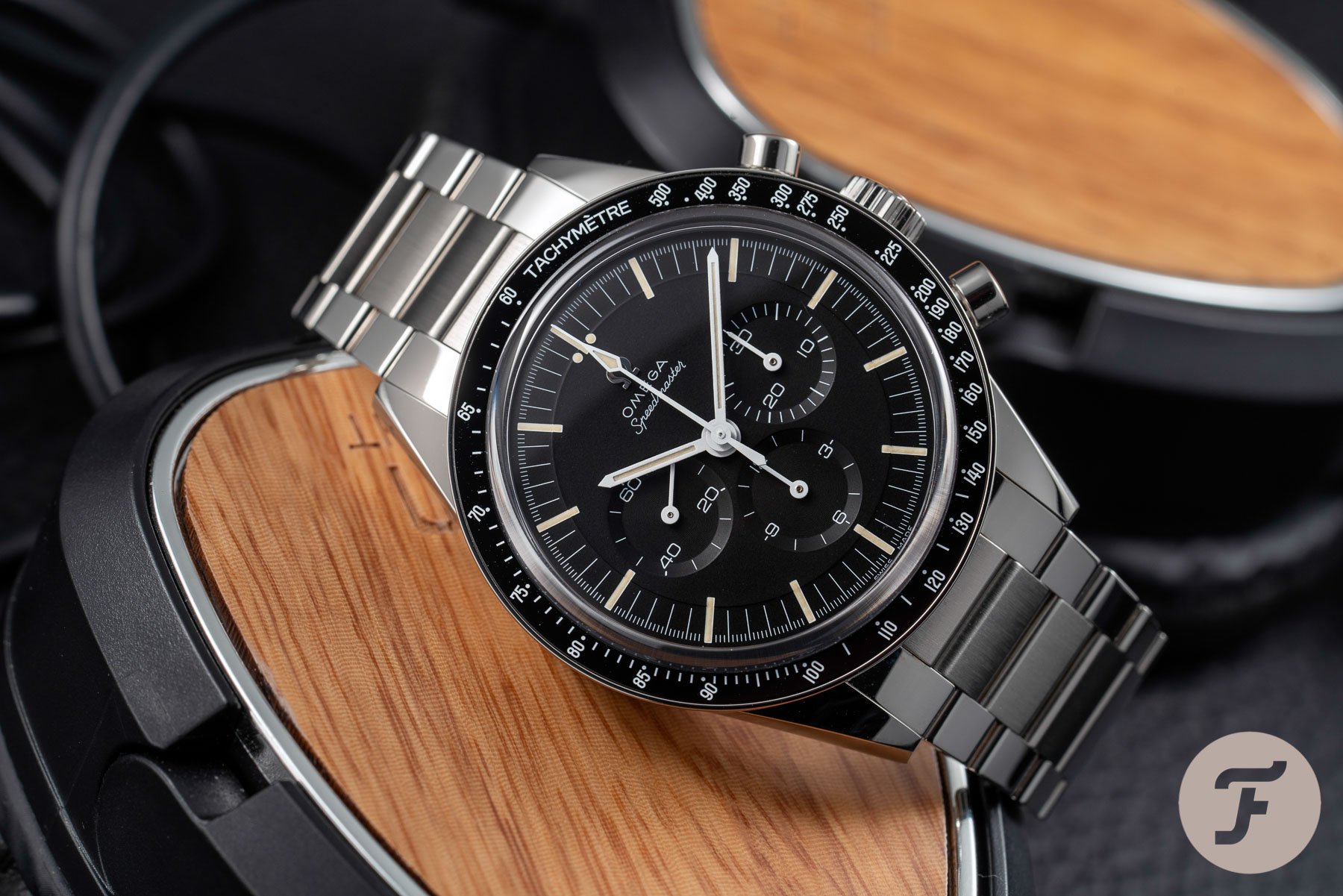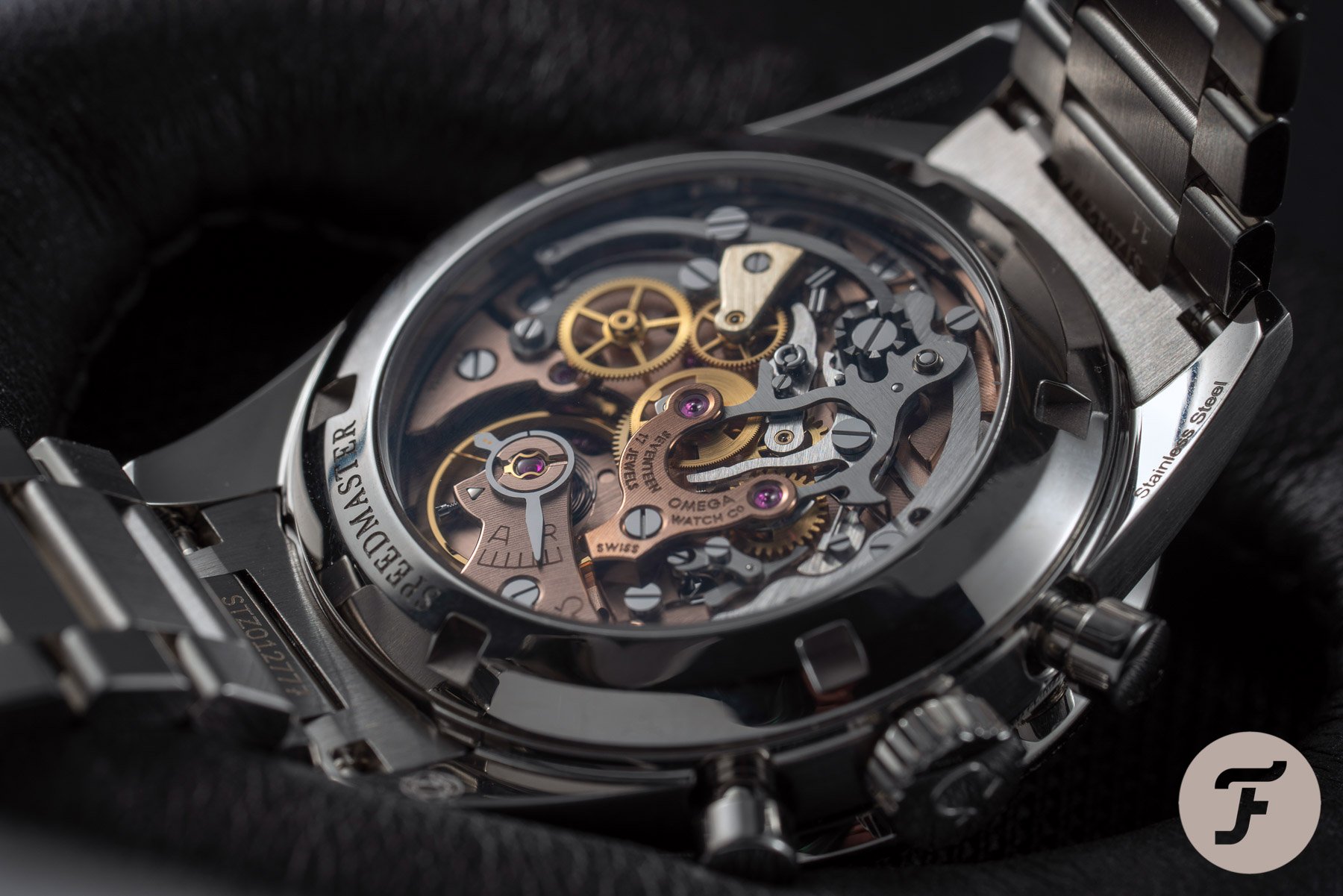The Fast And The Fratelli: TAG Heuer Monza Versus Omega Speedmaster Calibre 321
Welcome to my race track. On the left side, we have the TAG Heuer Monza, and on the right side of the track, there’s the Omega Speedmaster Calibre 321. This race is part of our contest, The Fast And The Fratelli, where you get to decide which watch wins and goes on to the next track. The goal of this race is to find the best racing chronograph of the past ten years.
We’ve set some rules for fair play. The watch must have been produced in the last ten years (since 2011), it must be mechanical, and it must be able to measure elapsed time for at least one minute. Also, it must feature a tachymeter scale. Oh, and it must be awesome, of course! As you can see, we will not exclude limited or special editions, and there’s also no price limit. So nearly anything goes in terms of availability and price. After our Grand Prix, we will be giving away a 1/10-scale RC car from Traxxas, the Bandit BlueX buggy. It’s pretty much ready to run, with the battery pack, receiver, and all the necessities included in the box. Just unpack it, charge it, and you’re off to the races! But before we get there, let’s have a race of our own.
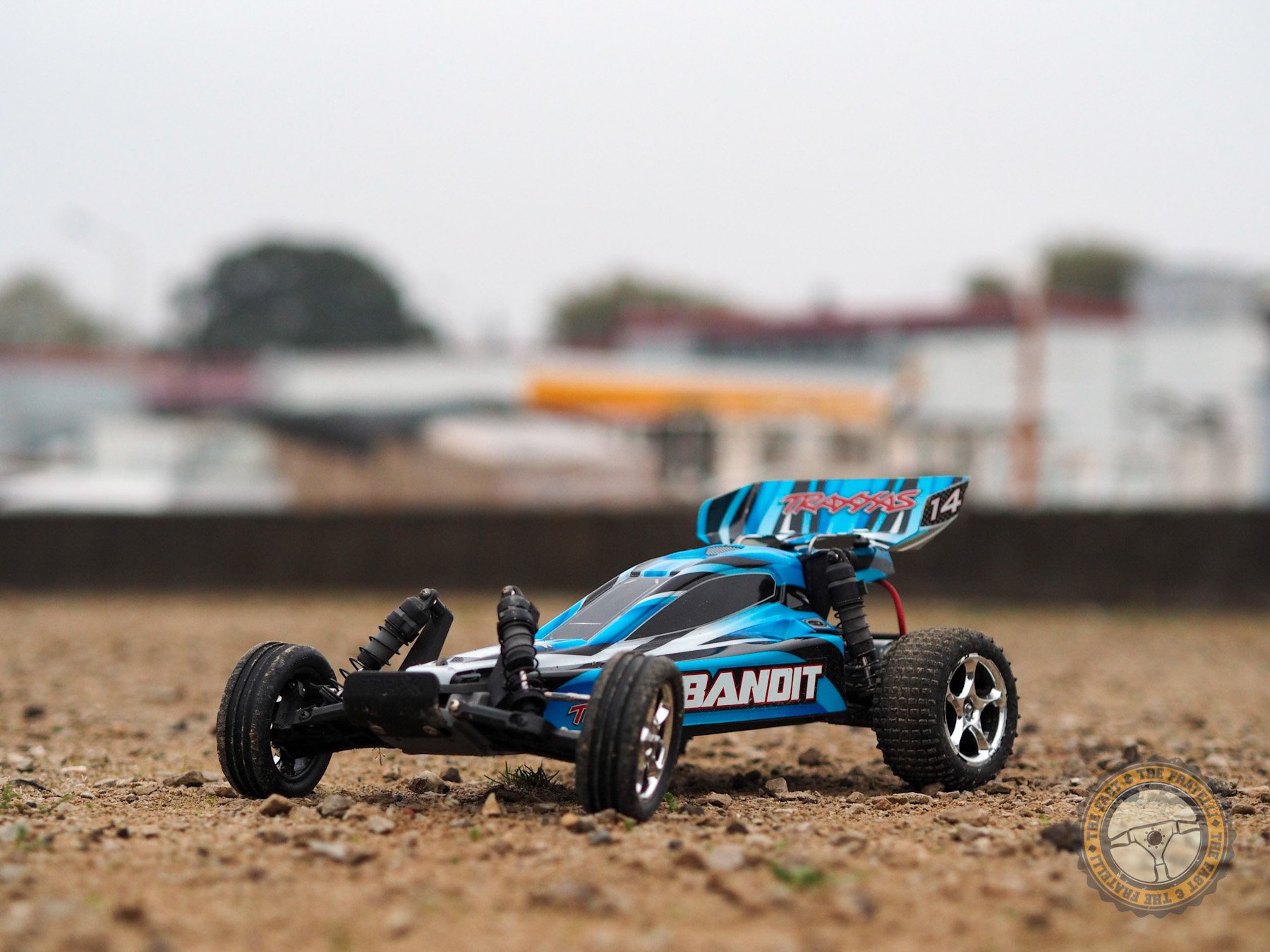
This one belongs to one of our team members. But rest assured, you’ll get a BNIB one of these Traxxas beauties.
My contenders
I selected two watches for this first race — the TAG Heuer Monza reference CR2080.FC6375 and the Omega Speedmaster Calibre 321 reference 311.30.40.30.01.001. First up is the Monza from TAG Heuer. Ladies and gentlemen, start your engines!
The Fast And The Fratelli — TAG Heuer Monza
The Monza isn’t new. It was originally launched back in 1976 when TAG Heuer was still Heuer. Heuer’s Monza commemorated Ferrari’s world championship title of 1975 with Niki Lauda and Clay Regazzoni. TAG Heuer re-introduced the Monza collection in the early 2000s, and I remember it vividly. Especially the Monza 36, which used Zenith’s El Primero chronograph 36,000vph movement. The Monza never made proper traction, in my opinion, at least not as much as the (TAG) Heuer Monaco.
I’ve tried the TAG Heuer Monaco, and it’s not for me. I don’t like wearing rectangular watches, and although you could say the Monza’s case isn’t round either, the shape suits me better than that of the Monaco. I am not alone on this, as Steve McQueen gave his Monaco away after shooting the movie Le Mans in 1971. But that’s a different story. Interestingly, some of the early 2000s TAG Heuer Monza watches only had “Heuer” on the dial. Other versions, the more dressy ones, had the TAG Heuer logo. So did the Monza 36, by the way.
The Monza of modern times
Then, in 2011, TAG Heuer tried it once more with a new Monza watch. It was only one model, which had the El Primero chronograph movement. The new Monza was also a nod to the 1930s cushion-shaped Heuer case that inspired the Monza design. It had a white dial, printed Arabic numerals with faux-patina (already in 2011!), and cathedral-shaped hands. There was little racing inspiration in that piece. The watch I feature here, however, has everything to do with racing. It is the 2016 Monza reference CR2080.FC6375.
It was originally limited to only 2000 pieces, but it was later on changed to a numbered edition (and #3400 is for sale here). This watch is a re-edition, or rather, an homage to the 1976 Monza that paid tribute to the 1975 World Championship won by Ferrari. It’s an homage at best, to be honest, as it doesn’t even have the same case shape, let alone the same set-up for the crown and pushers. The original Monza had its crown on the left side and the pushers on the right. This 2016 Monza, however, has everything located on the right side of the case. The original watch had caliber 15, and also had a slightly different dial layout than the 2016 Monza with caliber 17.
A lot to love
Aside from the fact that it isn’t a precise replica of the original, I have to say that this 2016 Monza is one of the modern TAG Heuer watches that I like best. It has a 42mm case in titanium with a black PVD finish. The bezel has a brushed finish, giving it a nice contrast to the shiny surfaces. Although the dial layout differs from the original, the typography used is similar. The Monza has a double scale on the rehaut. One is a pulsometer to measure heart rate, and the second is a tachymeter. On the dial, we find the running seconds in the sub-dial at 3 o’clock and the 30-minute recorder on the 9 o’clock sub-dial. The large red seconds hand is activated by the pusher at 2 o’clock.
Then, there’s a date window at 6 o’clock, just like on the 1976 Monza watch. Instead of “Automatic Chronograph,” it now says “Automatic Calibre 17” on the dial. I am not so much a fan of mentioning a caliber number on the dial, but at least they printed some text there to give it a nice, balanced design. As you can see in the pictures, it’s quite a legible design too, with large white time-telling hands and red chronograph hands on a black background. The case back indicates it is a limited edition, but not of how many pieces. As written above, TAG Heuer first communicated that there would be only 2000 pieces, but I’ve come across higher numbers.
Movement matters
Inside this watch is the TAG Heuer caliber 17, otherwise known as the ETA 2894-2. This is basically a modular chronograph movement, meaning that the base is an ETA2892-A2 with a module on top for its chronograph functionality. It ticks at 28,800vph, has 37 jewels (because it is a modular movement, the number of jewels is also quite high), has a quick-set date, and hacking seconds. The caliber 17 movement has a power reserve of 38 hours.
I am not that much of a fan of modular chronograph movements, but it gets the job done. Since it is based on ETA, it can be easily serviced by any qualified watchmaker, not only those in the pit box of ETA or TAG. Also, using a movement like this keeps the price sane. The Monza came with a leather racing strap and a folding buckle. The retail price of this watch in 2016 was $5250, or €4700. Today’s pricing for a pre-owned example starts in the low €3000s, but expect to pay around retail for an unworn new one. However, this contest doesn’t take the price into account. We just want to find the coolest racing chronograph.
The Fast And The Fratelli — Omega Speedmaster Calibre 321
This watch is also based on something from the old days. But its inspiration dates back further than the 1976 Monza does. This Speedmaster Calibre 321 was introduced in 2020, but it is based on the Speedmaster 105.003 reference that debuted in 1963. It was the third generation of the Speedmaster, a watch that was introduced in 1957 as a chronograph for automotive racers, athletes, and scientists. They even advertised this watch with a racer and his co-driver. Another interesting fact is that the Omega Speedmaster was the first watch ever with an external tachymeter bezel. The 105.003 also happens to be the exact watch tested and qualified by NASA for use during manned space missions. But let’s not talk about that (space) race; let’s talk about the watch itself.
The Speedmaster Calibre 321 (ref. 311.30.40.30.01.001) is nearly identical to the original 105.003. Omega used a scanning technique known as tomography to get all the details right, including that of the historically significant movement. There are, however, a few points of difference between this new model and its 1960s inspiration. This new Speedmaster uses a sapphire crystal instead of a Hesalite (Plexiglass) one, a modern ceramic bezel insert, and a display back to show off the beautiful column-wheel, Sedna gold-plated caliber 321. The 39.7mm case feels very pleasant on the wrist, and it has become my (almost) go-to watch. It was a tough call between this 321 and the regular Moonwatch with caliber 3861. But I picked the Calibre 321 for this race because it was the movement in the first-generation Speedmaster, before anyone thought it would end up in space.
In terms of Speedmasters, I think that this watch is pretty close to perfect. One can complain about its retail price, but as indicated before here on Fratello, the watch is manufactured in a separate workshop in Biel, away from the automated production lines. There’s just one watchmaker responsible for each watch, a bit like what happens in Omega’s tourbillon workshop (which is actually the next door down the hallway there). Aside from the price, this Speedmaster can be seen as a celebration of what Omega is capable of. From creating modern, high-tech (or high-mech) pieces to watches that are true to watchmaking from 50-60 years ago, Omega is a master of its art form. The action of the pushers is incredibly nice on this watch, and with the large chronograph second hand and small minute recorder, you’ll be able to time your RC car’s lap times.
A truly special Speedmaster
If you’re a frequent reader of Fratello, you’ll know that we’ve covered this watch a few times. I’ve had it in my own collection since June 2020. I find it a wonderful watch to wear, especially due to the thin, extremely comfortable bracelet. It is not a limited edition, but in a way, it is. The production capacity for the caliber itself is quite low, averaging between 1,000 and 2,000 units per year. Although this movement is also used in the Moonwatch Calibre 321 in platinum, we can safely assume that the majority will end up in this Speedmaster Calibre 321 in steel.
The hand-wound caliber 321 dates all the way back to the 1940s, but Omega is producing it again today with exactly the same technical specifications. It has a power reserve of 55 hours, a ticking speed of 18,000vph, and a column-wheel mechanism for the chronograph. Instead of the copper plating that Omega used for this movement in the ’40s, ’50s, and ’60s, the new caliber 321 features Sedna Gold plating. The retail price of this watch is €14,000, or $14,100. On top of that, however, you’ll need a lot of patience to get your hands on one.

